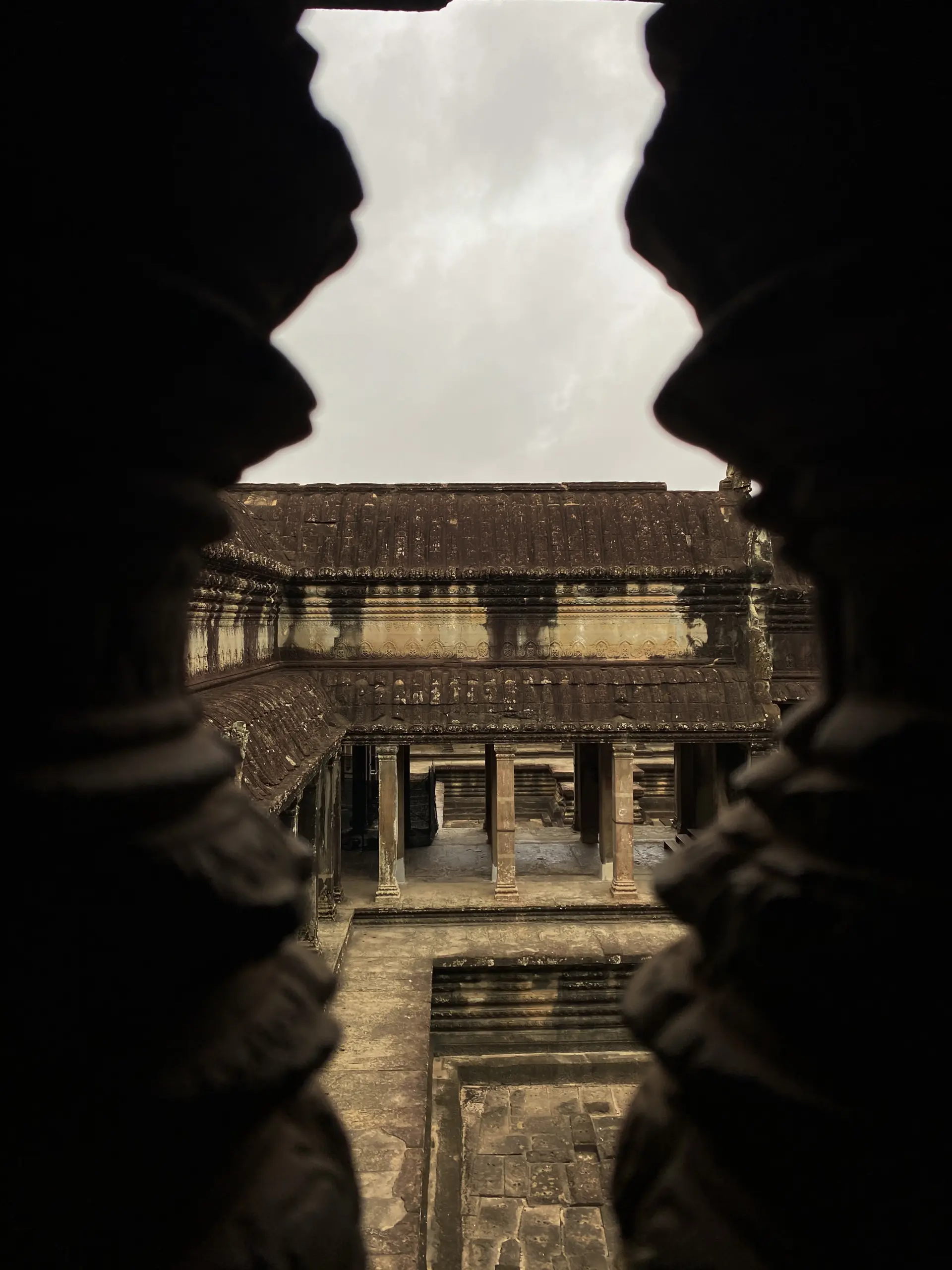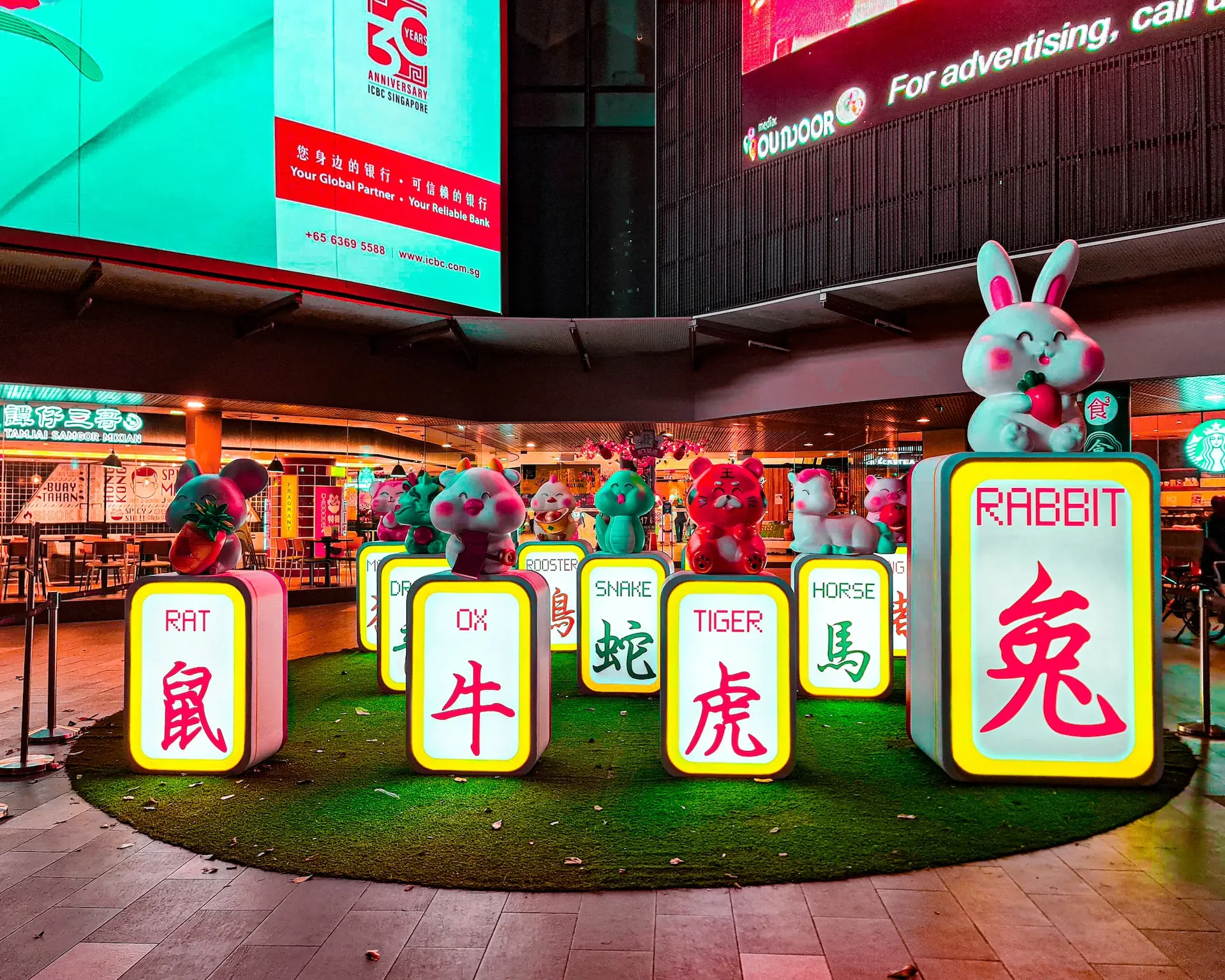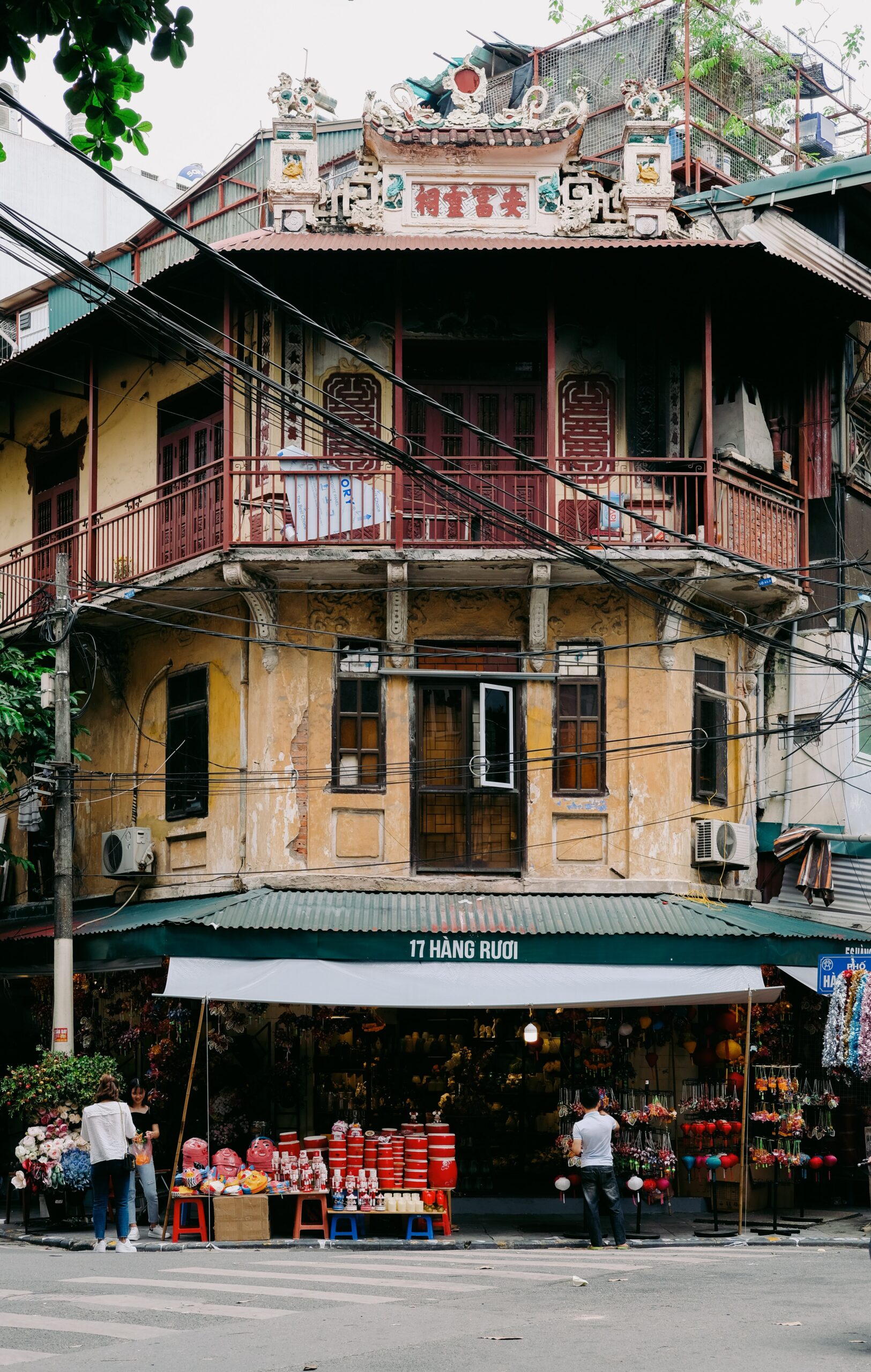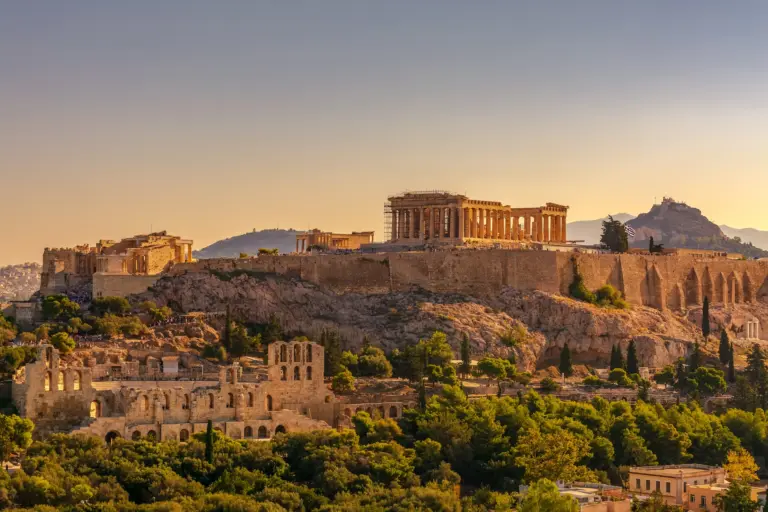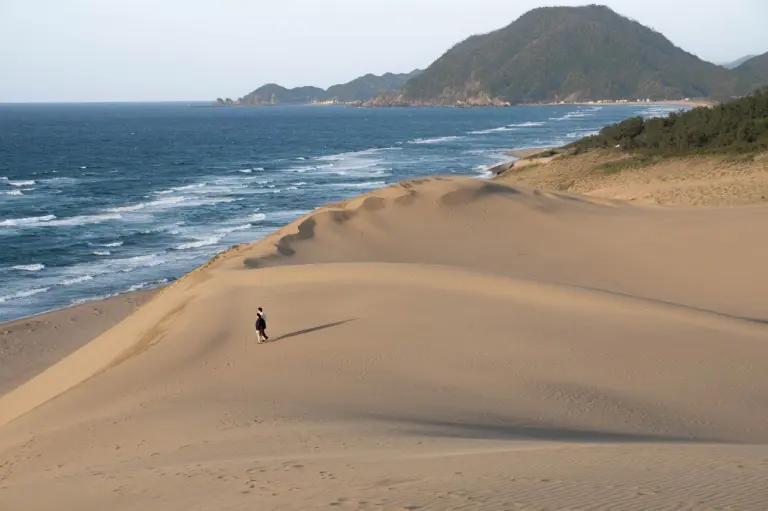Laos is a small, landlocked country in Southeast Asia that’s often overlooked by travelers in favor of its more well-known neighbors, Cambodia, Thailand and Vietnam. But for those who take the time to explore, you will find that Laos offers a wealth of natural beauty and fascinating culture. During my time in Laos, I was able to meet kind-hearted locals, experience breath-taking landscapes and get an intense dose of adrenaline from kayaking and tubing!
The landscape of Laos is dominated by lush forests, majestic mountains, and winding rivers, including the Mekong, which flows through the heart of the country. Apart from its natural landscapes, Laos has a rich cultural heritage that’s heavily influenced by Buddhism. Monks in saffron robes can be seen walking through the streets of cities and towns, while ancient temples and shrines are scattered throughout the countryside. If you’re interested in going deeper into the fascinating world of Buddhism, more specifically Theravada Buddhism in Laos, jump on here to learn more about this spiritual tradition and its influence on the country.
Table of Contents
ToggleLao Culture Overview
Did you know that Lao culture is heavily influenced by both Buddhism and Animism? While Buddhism is the dominant religion in Laos, you’ll see that the belief in spirits that inhabit natural objects, also plays a significant role in Lao culture. One thing that really piqued my interest was seeing these tiny houses around the streets of Vientiane. They were apparently called Spirit Houses and you can see these miniscule figures residing inside them. The spirits are thought to bring good fortune and protect the people from harm and misfortune.
Lao people are also known for their hospitality and respect for elders. When visiting someone’s home or a temple, it’s customary to remove your shoes before entering. If you’re offered food or drink, it’s also polite to accept it. It is also customary to greet people with a “sabaidee” (hello) and a slight bow, and to avoid pointing with your feet or touching someone’s head!
To learn more about Lao culture, festivals, traditions, customs, and etiquette, be sure to check out my blog post that goes more in-depth on the topic.
Best Places to Visit in Laos

1. Vientiane
Vientiane, the capital city of Laos, is a charming blend of old-world charm and modern development. Located along the banks of the Mekong River, Vientiane offers a relaxed atmosphere with a slower pace of life compared to other capital cities in Southeast Asia.
You can explore the city’s rich history by visiting ancient temples and monuments, such as the Pha That Luang, a gold-covered Buddhist stupa, and Pa Tu Xai, one of the city’s main landmarks. The city is also home to a thriving night market, where visitors can try local street food and shop for handmade crafts.
If you’re planning on exploring the city, be sure to check out my blog post on the best places to visit in the Vientiane
2. Xieng Khouane (Buddha Park)
Located just outside of Vientiane, Xieng Khouane, also known as Buddha Park, functions both a religious and artistic place to experience and can be easily done as a daytrip. The park features an array of religious sculptures and structures, including a giant reclining Buddha, a seven-headed Naga serpent, and a giant pumpkin structure that you can climb up to get the full unobstructed view of the whole area. From the moment you step in, you will be greeted by Buddha statues of all shapes and sizes, some in strange forms that can’t be seen anywhere else! Xieng Khouane also gives you a taste of the fusion of Buddhism and Hinduism with over 200 different statues, many of them combining elements of both religions.
3. Plain of Jars
Have you ever heard of the Plain of Jars? It’s a mysterious archaeological site that is definitely worth a visit if you’re interested in mysterious history. Located in the Xieng Khouang Province, the Plain of Jars consists of thousands of stone jars scattered across the landscape.
The jars vary in size from small to enormous, with some reaching up to three meters in height! While the purpose of the jars is unknown, they may have been used in ancient burial practices or for storing food. It’s hard to imagine the people who created and placed these jars so many centuries ago. Walking among the jars is a surreal experience, and coupled with the breathtaking views of the surrounding countryside, you can be sure that it’s well worth the trip!

4. Vang Vieng
Vang Vieng is a small town in the middle of Laos known for its stunning natural beauty and adventurous activities. Notorious for being a backpacker party town in the past, it has since broken free of that stigma and re-established itself as a prime location to experience the best of the natural world Laos has to offer. It is nestled among limestone mountains and offers opportunities for rock climbing, hiking, and exploring caves. The Nam Song River runs through the town and is popular for tubing and kayaking. The town also offers a laid-back atmosphere with a variety of bars and restaurants catering to backpackers and adventure-seekers.
I have also written a more in-depth blog detailing the different activities and places to visit in Viang Vieng. If you’re dropping by, read on here.
5. Kuang Si Waterfalls
You won’t want to miss the mesmerizing Kuang Si Waterfalls. Deep in the jungles of Luang Prabang, these falls offer an escape to paradise.
As you hike through the lush greenery of the forest, you’ll catch glimpses of the turquoise blue water cascading down over limestone cliffs. And once you arrive at the falls themselves, you’ll be in awe from the sheer beauty of the crystal-clear water, and the refreshing mist that fills the air.
Feel free to take a dip in the cool waters, or even jump from the rocks into the pools below. If you’re feeling a bit daring, you can explore the network of hidden caves and pools behind the falls themselves.
6. Bolaven Plateau
A true hidden gem that I just had to include due to it being such a breathtaking destination. With giant waterfalls, evergreen forests and a rich cultural heritage, it’s just waiting to be discovered! The Bolaven Plateau is home to a number of small villages, each with its own unique charm. The area is known for its coffee plantations, with many opportunities to try some of the world’s finest coffee.
But it’s the natural beauty of the Bolaven Plateau that really sets it apart. The region is home to some of the most stunning waterfalls in Laos, including the magnificent Tad Fane, Tad Lo, and Tad Yuang waterfalls.
For those who love the outdoors, the Bolaven Plateau is the perfect place to get the ball rolling. The region is crisscrossed by a network of hiking and biking trails that lead through fabulous vistas and past some of the area’s most beautiful natural landmarks.
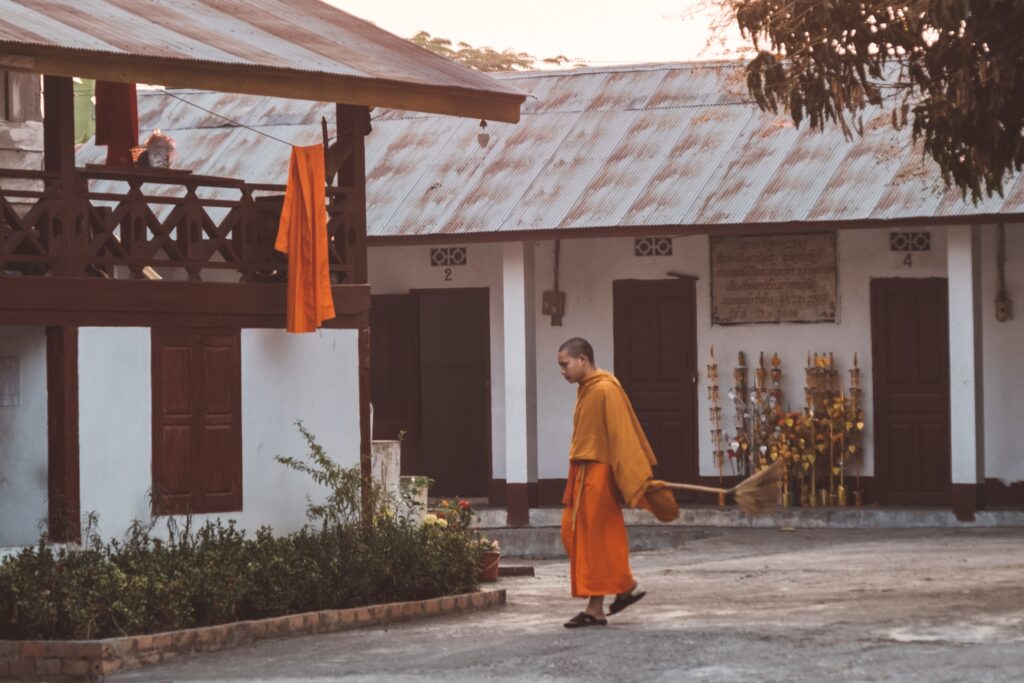
7. Luang Prabang
A UNESCO World Heritage Site, nestled amidst a picturesque landscape of rolling hills and winding rivers, Luang Prabang is a dream destination for anyone seeking a serene escape from the hustle and bustle of modern life. As you wander through the town’s winding alleys, you’ll find yourself transported back in time to an era of majestic temples, ornate palaces, and tranquil gardens.
The town’s unique blend of French colonial and traditional Lao architecture creates an enchanting atmosphere that is unlike anywhere else in Southeast Asia. From the iconic golden spires of the Wat Xieng Thong temple to the elegant lines of the Royal Palace, every corner of Luang Prabang is a feast for the senses. As you back to your hotel, the sound of monks chanting in the distance serves as a reminder of the spiritual heart that beats at the center of this beautiful town.
8. Si Phan Don (4,000 Islands)
Imagine stepping onto a quiet island, surrounded by the peaceful sound of the flowing river, you gaze out at a panoramic view of the serene water and surrounding landscape. That’s what you can expect when you visit Si Phan Don, or the “4,000 Islands” in southern Laos.
This lovely region is made up of countless islands, with an abundance of natural beauty and wildlife to be discovered. You can explore the area by boat or kayak, venturing out to see the rare Irrawaddy dolphins that make their home in the river.
As you go through the sleepy villages and meet the friendly locals, you’ll feel the warmth and tranquility of Lao culture. At night, you can unwind and relax in a simple bungalow or hammock, listening to the sounds of nature all around.
Top Things to Do in Laos
1. Trekking the National Parks
Some of the best ways to explore the natural beauty of Laos while getting in touch with Mother Nature is through trekking. From deep jungles, rolling hills, and cascading waterfalls, there are plenty of opportunities to get in tune with yourself and the land. From easy nature walks to challenging multi-day treks, there’s something for everyone.
One popular trekking destination is the Luang Namtha region, which offers a variety of hiking trails through forests and hill tribe villages. The Phou Khao Khouay National Park, just outside of Vientiane, is another great option for hiking and trekking, with several trails offering close-up views of waterfalls and wildlife.
For those seeking a more challenging trek, the three-day trek to Phongsaly in northern Laos is a popular choice. This trek takes you through remote hill tribe villages and offers breathtaking views of the surrounding mountains.
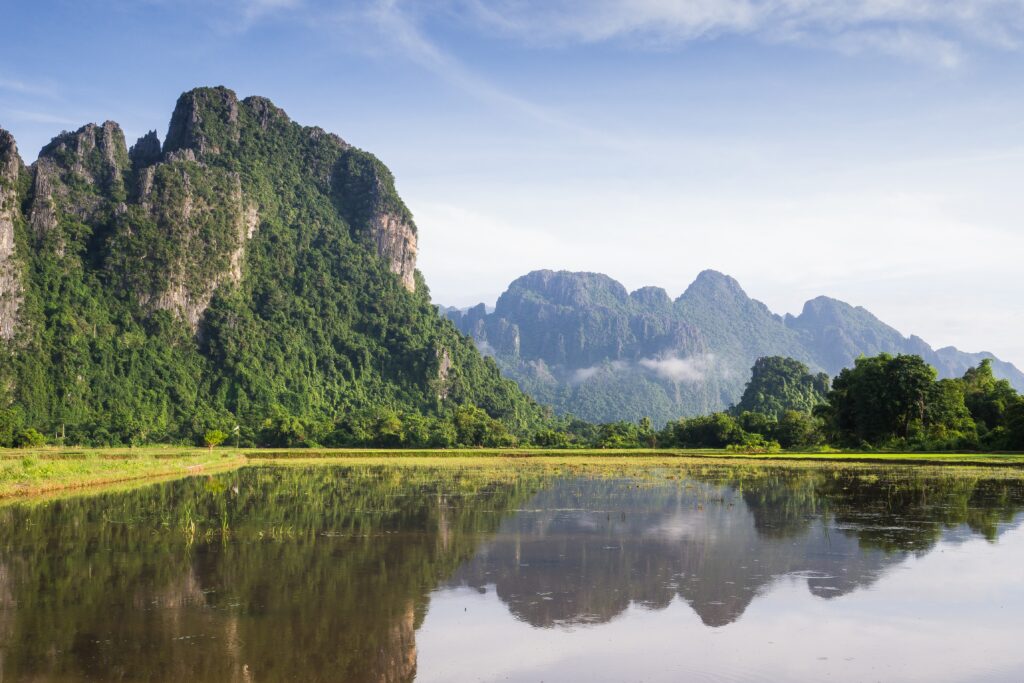
2. Water Activities on the Mekong River
The Mekong River is a vital lifeline of Laos, and it’s no surprise that there are plenty of activities to be enjoyed on its waters. The rapids and currents of the Mekong offer a challenging yet exhilarating experience for those seeking an adrenaline rush.
For thrill-seekers, rafting on the Mekong is a popular activity, with several tour operators offering different levels of difficulty to cater to various skill levels. For those seeking a more relaxed pace, kayaking is also a great option, allowing you to take in the stunning views at your own pace.
Tubing is another popular activity on the Namsong River in Vang Vieng. Float down the river in a rubber tube and enjoy the scenic views of the surrounding karst mountains and lush forests. Just be mindful not to indulge in too much drinks as there have been many cases of people getting into accidents.
3. Zip-lining with Gibbons
If you’re looking for an unforgettable adventure in Laos, the Gibbon Experience is not to be missed. Located in the deep jungles of northern Laos, this eco-tourism project offers a unique ziplining experience through the treetops.
With the help of experienced guides, you’ll zip along cables between tree houses high up in the canopy, taking in bird’s eye views of the forest below. Along the way, you’ll have the chance to spot wildlife like gibbons, macaques, and hornbills. It’s a great way to get up close and personal with nature while supporting sustainable tourism in Laos.
4. Meditation and Yoga Retreats
Laos is a perfect place to disconnect from the world and immerse yourself inyoga and meditation practices. The serene atmosphere and beautiful surroundings make it an ideal destination for those seeking inner peace and tranquility. The country has many yoga and meditation retreat centers where you can join classes, workshops, and retreats. These retreats are usually held in natural and peaceful settings like forests, mountains, and near waterfalls, which provides a calming and relaxing environment for practitioners.
Meditation retreats in Laos offer a unique opportunity to learn and practice meditation techniques in peaceful environments. These retreats can range from a few days to several weeks, where one can learn various meditation techniques, such as Vipassana and Mindfulness. I have also written an article that goes in-depth on the different kinds of meditation and the benefits you can get from practicing, learn about them here.
There are various types of yoga retreats available in Laos, from Hatha to Ashtanga and Vinyasa, each offering its unique techniques and practices. Many retreat centers offer programs that combine yoga and meditation practices, providing a complete spiritual experience. If you are interested about learning the different kinds of yoga and finding out which one is best for you, read on here.
5. Connect with Animals
Like any country, Laos is home to a diverse range of flora and fauna, one of the best places to go wildlife watching in Laos is the Nam Et-Phou Louey National Park, where you can see a range of animals including tigers, leopards, and gibbons. Another great spot for wildlife watching is the Bokeo Nature Reserve, which is home to a large number of endangered species including the Asiatic black bear, clouded leopard, and pangolin.
There are also several ethical elephant sanctuaries that offer the opportunity to interact with these majestic animals in responsible ways. One such sanctuary is the Elephant Conservation Center in Sayaboury, where you can learn about the challenges facing elephants in Laos and around the world, as well as to observe them in their natural habitat and even participate in their care. By participating in these activities, you can help support conservation efforts and ensure the survival of these incredible animals for generations to come.

6. Chat with Monks
To be able to talk with a monk can be a very enlightening experience for anyone. It can serve as an excellent avenue in learning more about the Laos’s culture and spiritual traditions first-hand. Monks are highly respected and play an important role in society, and many are happy to engage in conversations with tourists. You can find out more about the proper etiquette to be mindful of further down the article.
One option is to visit the Big Brother Mouse bookstore in Luang Prabang, which hosts weekly monk chat sessions. You can have the opportunity to speak with a monk and ask questions about Buddhism, daily life in the monastery, and anything under the sun.
7. Attend a Lao Cooking Classes
Cooking classes are a fantastic way to immerse yourself in Lao culture and learn more about the country’s cuisine. Many cooking classes start with a visit to a local market where you can select fresh ingredients for your dishes. From there, you’ll head to a kitchen where a Lao chef will guide you through the preparation of traditional dishes such as laap, tam mak hoong, and mok pa.
One of the highlights of Lao cuisine is the use of fresh herbs and spices such as lemongrass, galangal, and kaffir lime leaves, which give the dishes a unique and refreshing flavor. By taking a cooking class, you’ll not only learn how to prepare delicious Lao dishes, but also gain insight into the country’s cooking traditions.
You can join a cooking class in Luang Prabang through my partner, GetYourGuides, right here.

How to Get Around Laos
Getting around Laos can be an adventure in itself due to how unpredictable the road and everything else is. Here are some ways to get around the country:
- Tuk-Tuk: The classic three-wheelers can take you around town for a reasonable price. Always negotiate the fare beforehand, but a typical fare in the city can cost anywhere from 10,000 – 30,000 LAK (1 – 3 USD).
- Songthaew: Songthaews are a pickup truck with bench seats in the back, and they are often used for short trips outside of the cities. Expect to pay around 20,000 – 50,000 LAK (2 – 5 USD) for a ride from one town to another.
- Bus: Buses are the most popular mode of transportation for long-distance travel in Laos. The prices vary depending on the route and type of bus. For example, a VIP bus from Vientiane to Luang Prabang can cost around 140,000 LAK (15 USD), while a local bus can cost around 60,000 LAK (6 USD).
- Minivans: Minivans are another option for longer journeys, and they are often faster and more comfortable than public buses. Prices are slightly higher, but still affordable at around 100,000-150,000 LAK (12-18 USD) per person. I took a minivan from Vientiane to Vang Vieng and back and it was all good!
- Boat: Traveling by boat is a unique way to see the country. You can take a slow boat or a speedboat, depending on your preferences. A slow boat from Huay Xai to Luang Prabang takes two days and costs around 240,000 LAK (25 USD), while a speedboat can take only six hours but can be a bit dangerous and uncomfortable, costing around 280,000 LAK (30 USD).
- Hitchhiking: It’s not as common as in some other countries, but many locals are friendly and willing to give travelers a ride. Keep in mind that hitchhiking does take time and comes with some risks, so use common sense when deciding whether or not to accept a ride.
- Motorbike Rentals: Renting a motorbike is another popular way to get around Laos. You can rent a motorbike for around 100,000 – 150,000 LAK (10 – 15 USD) per day. Just be careful as the roads in Laos are not always in the best condition.
- Car Rentals: Car rentals are widely available in Laos, with many international and local rental companies operating in major cities such as Vientiane and Luang Prabang. On average, a basic economy car can cost around 500,000 – 700,000 LAK (50 – 70 USD) per day. I recommend RentalCars.com if you’re trying to find affordable rentals in Laos.
- Planes: If you’re short on time, flying is a convenient option for getting around Laos. Expect to pay around 50 – 100 USD for a one-way ticket. I would say that this should be your last option as flying is not the most sustainable way and leaves the biggest carbon footprint amongst all of the choices. Being on the road and seeing the countryside offers a much more immersive and authentic experience.

How to Stay Safe in Laos
As a traveler, safety should always be a top priority. Although Laos is generally a safe country to visit, it’s important to take some precautions to ensure a hassle-free trip.
Be aware of pickpocketing and bag snatching, especially in crowded areas and tourist hotspots. Keep your valuables in a secure place and avoid carrying large amounts of cash with you. It’s also a good idea to keep a photocopy of your passport and important documents in case they get lost or stolen.
Another important aspect to keep in mind is that sleeping with Lao women is forbidden by law and can result in severe consequences. Be respectful of the country’s culture and traditions. There are cases where people get lured into brothels only to be blackmailed and reported to the police.
Vang Vieng has openly available drugs through the “happy menus” some of its restaurants. Keep in mind that drugs are illegal in Laos, take care and stay responsible folks.
While generally safe, for solo female travelers, it never hurts to be vigilant when traveling at night. Stick to well-lit areas and avoid walking alone in secluded areas. Make sure to have a friend while out partying.
It’s always my recommendation to get travel insurance before heading out, SafetyWing is a trusted partner by thousands of nomads to get insured with.
Best Time to Visit Laos
The best time to visit Laos is during the dry season, which runs from November to April. This is when the weather is cooler and drier, with clear blue skies and comfortable temperatures ranging from 15-25°C (59-77°F) in most parts of the country. As usual, with the best time period also brings with it peak tourism.
The rainy season runs from May to October, with heavy rains and occasional floods in some parts of the country. The temperatures during this time range from 25-30°C (77-86°F), but the humidity can make it feel much hotter. The upside of visiting Laos during the rainy season is that there are fewer tourists and the countryside is lush and green, and the waterfalls and rivers are at their most spectacular but it can also be very difficult to try out a lot of outdoor activities.
What to Pack For Laos
- Lightweight clothing: Pack lightweight and breathable clothing for the hot and humid weather. It’s also a good idea to bring long-sleeved shirts and pants to protect yourself from bugs and the harsh sun.
- Rain gear: If you plan to visit during the rainy season, make sure to pack a raincoat or umbrella to stay dry.
- Good hiking/walking shoes: Laos is a country of natural beauty, and many of its attractions involve hiking and a lot of walking, so pack comfortable and sturdy shoes.
- Sun protection: The sun in Laos can be intense, so pack a hat, sunglasses, and sunscreen to protect your skin.
- Insect repellent: Mosquitoes can be a problem in Laos, so pack insect repellent to keep them at bay.
- Power adapter: Laos uses a mix of power outlets, so make sure to pack a travel adapter to keep your electronics charged. The power sockets are of Type A, B, C, E, and F. The standard voltage is 230V, while the standard frequency is 50Hz.
- Medications: Pack any necessary prescription medications and over-the-counter medicines for stomach upset, diarrhea, and dehydration as there are always these cases for the unsuspecting traveler.
Plan Your Trip to Laos | Best Travel Resources
Book Your Accommodations
- Booking.com – the world’s leading online booking platform for accomodations around the world, they have an extensive amount of available listings with zero booking fees and best price guarantees.
- Hostelworld – a backpacker’s best friend, Hostelworld has the largest collection of hostels and guesthouses for affordable prices.
Don’t Forget Insurance
- SafetyWing – from Nomad Insurance, an insurance by nomads for nomads. They understand our lifestyle well and have really comprehensive and flexible plans that cater to any traveler.
Find Cheap Flights
- Kiwi.com – my go-to for booking and finding the cheapest flights and it’s helped me save tons of money. They do virtual interlining which is connecting flights from airlines that do not codeshare, so you can find routes that you wouldn’t be able to find normally.
Join Tours & Activities
- GetYourGuide – is one of the best places to find unique tours and activities. I found that it’s an excellent way to meet fellow travelers and create fond memories. They are not only limited to tours as they also offer niche services such as skip-the-line tickets or private transfers.
Catch a Ride
- Rentalcars.com – nothing beats the freedom of the road, Rentalcars.com is the world’s largest online car rental service. They operate across 160 countries so they’re the perfect partner to work with if you find yourself wanting a ride.

